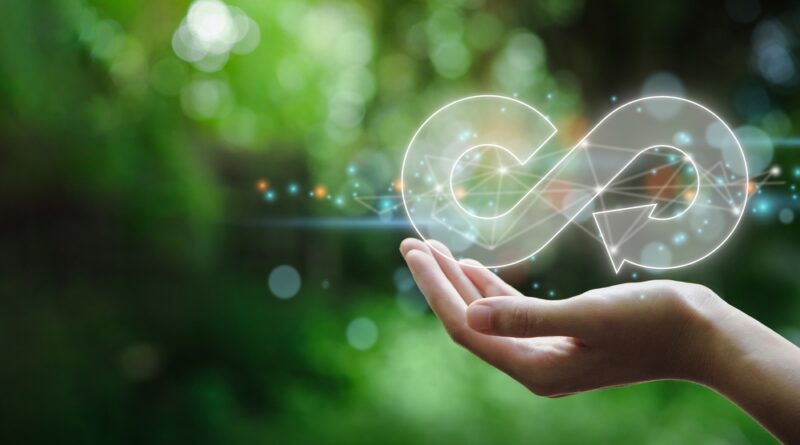Can A Circular Economy Really Work?
The concept of a circular economy is gaining traction worldwide. It challenges the traditional linear “take-make-dispose” model by promoting resource efficiency and waste reduction. With waste such as packaging, especially plastic, often ending up in vulnerable ecosystems such as the ocean, a different approach could benefits humans, animals, and the environment equally. In this article, we’ll explore whether a circular economy is feasible and how it could reshape our approach to production and consumption.
As concerns about environmental sustainability and resource depletion mount, the circular economy offers a promising solution. By keeping products and materials in use for as long as possible, the concept aims to minimize waste and maximize the value of resources. This approach not only benefits the environment but also presents economic opportunities for businesses and communities.
However, transitioning to a circular economy is not without its challenges. It requires a fundamental shift in mindset and business practices, as well as collaboration across sectors and stakeholders. Despite these challenges, many believe that the benefits of a circular economy – including reduced environmental impact, enhanced resource security, and economic resilience – outweigh the obstacles. In the following sections, we’ll delve deeper into the potential of a circular economy and examine real-world examples of its implementation.
Exploring the Potential of a Circular Economy
Understanding the Concept
The concept of a circular economy challenges the traditional linear model of production and consumption. In a linear economy, resources are extracted, processed into products, used, and then disposed of as waste. This approach leads to resource depletion, environmental degradation, and waste generation, contributing to sustainability challenges.
A circular economy, on the other hand, aims to close the loop by keeping resources in use for as long as possible, extracting the maximum value from them, and minimizing waste and pollution. This is achieved through strategies such as recycling, reuse, remanufacturing, and product design that prioritizes durability, reparability, and recyclability. By transitioning to recycling and upcycling, businesses and societies can move towards a more sustainable and regenerative model of economic development, creating jobs and growth without (or at least, with less) waste as a by-product.
Benefits of Going Circular
Embracing the principles of a circular economy can bring a multitude of benefits across environmental, economic, and social dimensions. From an environmental standpoint, reducing waste and keeping resources in use helps conserve natural resources, and minimize pollution. By optimizing resource use and reducing reliance on finite resources, a circular economy promotes long-term environmental sustainability and resilience.
Moreover, the transition to a circular economy presents economic opportunities for businesses, governments, and communities. By adopting circular practices, businesses can reduce costs, improve efficiency, and unlock new revenue streams. For example, by recycling and repurposing waste materials, companies can save on raw material costs and reduce disposal expenses. Additionally, embracing circularity can enhance competitiveness, drive innovation, and create jobs in industries such as recycling, remanufacturing, and renewable energy.
Challenges and Obstacles
Despite the numerous benefits of a circular economy, transitioning from a linear model presents challenges and obstacles. One of the key challenges is the need for a mindset shift among stakeholders, including businesses, consumers, and policymakers. Shifting away from the “take-make-dispose” mentality towards a circular mindset requires changing behaviors, attitudes, and cultural norms related to consumption, ownership, and waste generation.
Furthermore, implementing circular practices requires investment in infrastructure, technology, and skills development. Building the necessary infrastructure for recycling, remanufacturing, and waste management, as well as investing in innovative technologies for resource recovery and product design, requires significant upfront capital and ongoing investment. Moreover, regulatory frameworks and policy incentives are needed to support the transition away from existing waste-based consumption, including measures such as extended producer responsibility, eco-design standards, and incentives for sustainable practices.
Real-World Examples
Many businesses and organizations around the world are already embracing the principles of a circular economy and demonstrating its feasibility and effectiveness in practice. For example, Interface, a global flooring manufacturer, has implemented a closed-loop recycling system for carpet tiles, allowing old tiles to be recycled into new ones. This not only reduces waste but also conserves resources and reduces the company’s environmental footprint.
Similarly, Patagonia, an outdoor apparel retailer, has launched initiatives to promote repair, reuse, and recycling of its products, encouraging customers to repair their worn-out garments rather than dispose of them. Through its “Worn Wear” program, Patagonia offers repair services for its clothing and accepts used garments for recycling, extending the life of its products and reducing waste.
Additionally, cities and governments are implementing circular economy initiatives to address waste management challenges and promote resource efficiency. For example, Amsterdam has implemented a comprehensive waste management system that includes separate collection of recyclables, organic waste, and residual waste, as well as initiatives to promote reuse and recycling. By recovering valuable resources from waste streams and promoting circularity, cities like Amsterdam are reducing waste and conserving resources while also creating economic opportunities and improving environmental sustainability, a major step towards becoming a smart city.
Putting The Circular Economy in Perspective
While the concept of a circular economy promotes the idea of keeping resources in use for as long as possible, it’s important to recognize that not everything needs to be recycled or repurposed. Instead, the focus should be on ensuring that everything that could be recyclable or reusable is indeed recycled or repurposed.
This perspective shift acknowledges that some materials may not be suitable for recycling or repurposing due to technical limitations, contamination, or other factors. However, it emphasizes the importance of prioritizing recyclability and reusability in product design and manufacturing processes to maximize the potential for circularity. By designing products with end-of-life considerations in mind and using recyclable materials whenever possible, businesses can contribute to a more circular economy while minimizing waste and environmental impact.
Final Thoughts
Ultimately, the concept of a circular economy presents a compelling vision for a more sustainable and regenerative approach to economic development. By transitioning from a linear to a circular model, businesses and societies can reduce waste, conserve resources, and minimize environmental impact.
However, achieving any of this requires concerted efforts from stakeholders across sectors, including businesses, governments, and consumers. Collaboration, innovation, and policy support are essential for overcoming challenges and unlocking the full potential of circularity.
Ultimately, embracing the principles of a circular economy offers not only environmental benefits but also economic opportunities and social advantages. By working together to build a circular economy, we can create a more resilient, prosperous, and sustainable future for all.
Sources and Further Reading:
OECD, “The Circular Economy: What, Why, How and Where”
Harvard Business Review, “The Circular Business Model”
World Economic Forum, “What is the circular economy and why does it matter that it is shrinking?”
Ellen Macarthur Foundation, “It’s time for a circular economy”
Written with Support from ChatGPT by OpenAI
Photo Credit: Deemerwha studio/shutterstock.com

